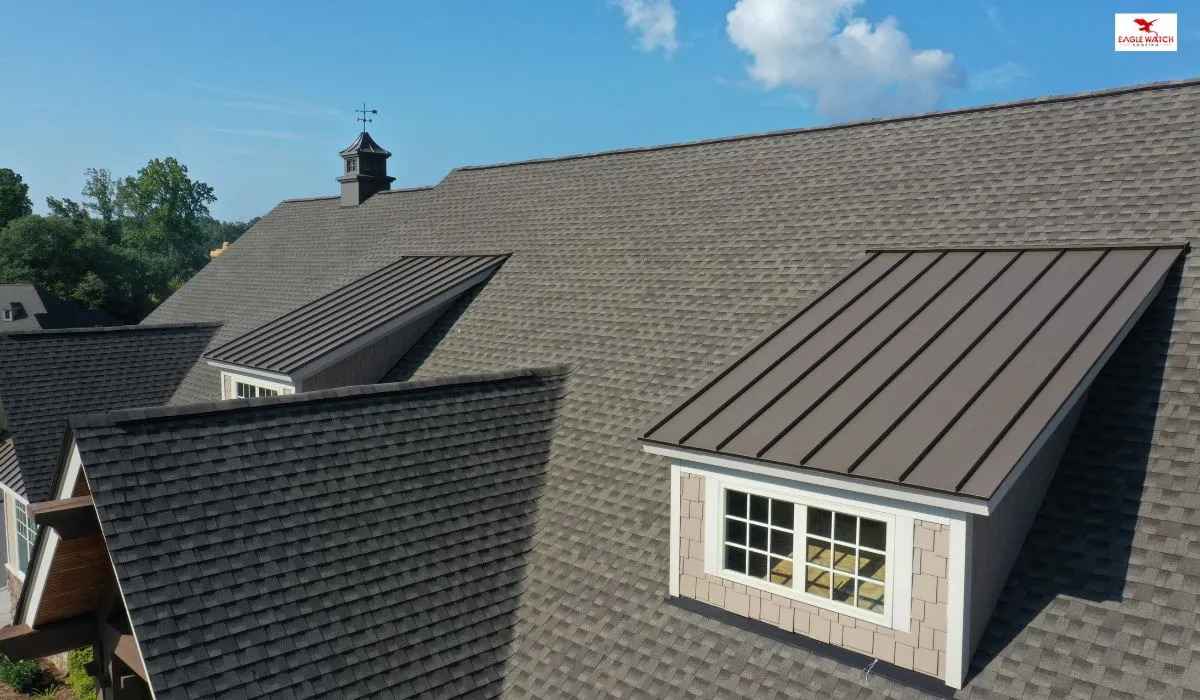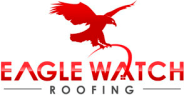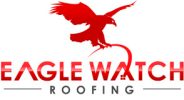How to Fix Your Commercial Roof Before Storm Season
Did you know that most commercial flat roofs only survive 10–20 years on average, even with sound construction and upkeep?
When storm season approaches, this limited lifespan becomes an even bigger concern for us business owners.
The natural exposure to weather elements significantly increases the risk of damage to commercial roofs, making timely repairs crucial.
One particularly troubling issue we need to address is ponding water, which can accumulate debris, impair roof seams, encourage mildew growth, and ultimately damage the structural integrity of our facilities.
That’s why we need to fix commercial roof issues before harsh weather hits.
Whether you’re dealing with how to fix commercial roof leaks, planning commercial metal roof repairs, or simply learning how to repair commercial roof damage effectively.
This guide will help you protect your commercial roof through proper maintenance and timely intervention.
Before storm clouds gather on the horizon, let’s explore the essential steps to ensure your commercial roof stands strong against whatever mother nature throws its way.
Understand the Risks Before Storm Season
Storm season presents a serious challenge for any commercial property owner.
As the weather intensifies, understanding what we’re up against becomes our first line of defense.
Why the storm season is dangerous for commercial roofs
The 2024 hurricane season demonstrated the harsh reality we face, with multiple storms reaching Category 3 or higher and causing billions in damages.
Most hurricane-related roof failures begin at the perimeter and edges, which experience the highest wind uplift pressure.
Unfortunately, even roofs that appear sturdy can fail when wind speeds exceed 100 mph.
For flat commercial roofs, the danger multiplies.
These surfaces don’t shed water naturally, making them especially vulnerable to moisture accumulation.
If your roof already shows signs of wear, storm season will mercilessly expose those weaknesses.
Common weather-related threats to roofing systems
High winds create a dangerous lifting effect through pressure differences between the inside and outside of a building.
This phenomenon, called uplift, can tear membranes, damage flashings, and in extreme cases, remove entire sections of roofing.
Additionally, water damage extends far beyond simple leaks.
Hidden moisture can foster mold growth within the roofing system, degrading air quality and weakening structural components.
When heavy rainfall combines with clogged drainage systems, the resulting ponding creates pressure points that compromise roof integrity.
Other significant threats include:
- Hail impacts that bruise or puncture roofing membranes
- Storm-tossed debris that blocks drainage and damages surfaces
- Lightning strikes that can cause fire or electrical damage
How storm damage impacts business operations
Beyond the physical damage, storm-compromised roofs directly affect our bottom line.
In the first half of 2023 alone, the U.S. experienced 12 separate billion-dollar weather disasters.
These events caused substantial operational disruptions through facility damage and power outages.
Moreover, water intrusion leads to mold growth, creating health risks for tenants and visitors.
Leaks and structural damage often force temporary closures, resulting in lost productivity and revenue.
Supply chain interruptions further compound these issues, as damaged transportation networks delay deliveries of goods and materials.
The timing of repairs becomes crucial – addressing vulnerabilities now helps avoid emergency fixes later and minimizes business disruption during the critical storm season.
Early Warning Signs Your Roof Needs Repair
Recognizing early warning signs of roof damage can save thousands in repairs and prevent business disruptions.
Let’s examine these crucial indicators that suggest your commercial roof needs immediate attention.
Pooling water and poor drainage
Ponding—water remaining on your flat roof for more than 48 hours after precipitation—signals potential trouble ahead.
These pools typically form in roof depressions caused by compacted insulation beneath the surface.
Furthermore, each rainfall worsens the condition as water weight compresses insulation and expands the affected area.
This standing water isn’t merely unsightly; it adds approximately 5 pounds per inch per square foot to your roof’s load.
Eventually, this excessive weight stresses the structure, leading to sagging and creating even larger depressions.
Once water begins pooling, you’ll need a commercial roofer to diagnose and fix the underlying cause rather than simply removing the water.
Cracks, blisters, and membrane damage
Blisters or bubbles on your commercial roof surface occur when air or moisture becomes trapped between roofing layers.
These raised areas appear as small bubble-like protrusions or long, raised lumps.
Although small blisters might seem harmless, they can indicate serious underlying issues that require prompt attention.
Pay special attention to blisters in seams, broken blisters, or those with cracking around them, as these need immediate professional assessment.
Ignoring these warning signs often leads to extensive interior damage affecting insulation, drywall, and even electrical systems.
Mold, mildew, and discoloration
Mold typically begins growing in shady spots where moisture collects after rainfall. Interestingly, by the time mold becomes visible, it has already been spreading for approximately 18 days.
While most mold is merely unsightly, black and green varieties can cause respiratory distress for employees and customers.
Even without visible signs, musty odors indicate potential mold growth in your building.
These unpleasant smells suggest moisture has found its way through your roof.
Unusual energy bills or HVAC strain
Unexpectedly high energy bills often indicate roof problems.
When your roof’s integrity is compromised, your HVAC system must work harder to maintain consistent indoor temperatures.
Water infiltration can saturate insulation, dramatically reducing its effectiveness.
Consequently, your heating and cooling systems operate more frequently, increasing energy consumption and costs.
Additionally, water seeping into your attic might damage ductwork or electrical systems, causing further inefficiencies.
How to Fix Commercial Roof Issues Before a Storm

Metal Roofing
Taking proactive steps now prevents costly emergency repairs after storms hit.
Once we’ve identified potential roof issues, it’s time to fix them properly.
Here’s how to tackle the most common commercial roof problems before severe weather arrives.
Inspect and seal roof penetrations
Roof penetrations—pipes, vents, ducts, and skylights—remain one of the most vulnerable points for water intrusion.
These intentional openings in the roofing system require special attention as they often become the primary source of leaks.
I recommend examining each penetration point carefully for gaps where the flashing meets the membrane.
The process for sealing penetrations on commercial roofs relies on redundant protection methods to ensure watertight integrity.
For proper sealing:
- Clean the area thoroughly around each penetration
- Apply foam in gaps around the penetration to block air flow and provide support
- Wrap with appropriate flashing material and secure with compatible sealant
Remember that a roof is only as strong as its weakest penetration point.
Accordingly, addressing these areas first provides immediate protection against potential storm damage.
Replace or reinforce damaged flashing
Flashing—the metal or waterproof material that seals roof transitions—commonly shows wear before other components.
Signs indicating replacement include visible rust, corrosion, cracks, holes, or flashing pulling away from surfaces.
Damaged flashing creates direct pathways for water to enter your building during storms.
If left unaddressed, this can lead to structural damage, mold growth, and increased energy costs due to compromised insulation.
Given these points, prioritize flashing around roof edges, vents, chimneys, and skylights.
For metal flashing that shows minor corrosion, removing rust with a wire brush and applying rust-inhibiting primer can extend its lifespan.
For severe damage, complete replacement with high-quality, weather-resistant materials offers the best protection.
Apply protective roof coatings
Roof coatings provide an additional waterproof layer that extends your roof’s life while improving energy efficiency.
These coatings come in several varieties:
- Acrylic coatings: Water-based and ideal for high-UV environments, providing good reflectivity
- Silicone coatings: Excellent for areas with frequent rainfall and ponding water issues
- Polyurethane coatings: Offer superior durability and resistance to foot traffic, ideal for hail-prone regions
Quality roof coatings protect against UV damage, create a waterproof barrier, and reduce the membrane’s temperature fluctuations.
This minimizes expansion and contraction that typically weakens seams over time.
In essence, applying a coating system often costs substantially less than complete roof replacement while providing immediate protection before storm season.
Check out Eagle Watch Roofing for quality coating applications.
They are known for delivering fast roof repair services with unmatched quality and care, providing timely solutions as true local roofing repair experts.
Clear debris and unclog drainage systems
Commercial roof drainage systems typically employ one of three methods: internal drains, scuppers, or gutters with downspouts.
Each system requires regular maintenance to function properly during heavy rainfall.
Debris blockage presents the most common drainage issue.
What seems like harmless leaves or small debris can quickly become major problems causing significant water damage.
The excess weight from standing water adds approximately 5 pounds per inch per square foot to your roof’s load.
To maintain proper drainage:
- Remove all leaves, branches, and debris from the roof surface
- Clean drain baskets/domes to prevent blockage
- Clear gutters and downspouts completely
- Water-test all drainage points to ensure proper flow
Performing this maintenance before storm season prevents water backup during heavy rainfall. Regular cleaning should be an integral part of any roof management program.
Fix minor leaks before they spread
Small leaks rarely stay small, especially during severe weather events.
Addressing these issues promptly prevents extensive water damage to insulation, drywall, and electrical systems.
For minor leaks:
- Apply appropriate sealants to small cracks or punctures
- Use high-quality patching materials compatible with your roofing system
- Reinforce seams showing signs of separation
- Check for and tighten any loose fasteners
Acting quickly on minor issues not only prevents more extensive damage but also extends your roof’s overall lifespan.
When to consider commercial metal roof repairs
Metal roofs offer exceptional longevity—up to 50 years with proper maintenance.
However, they face unique challenges requiring specialized repairs. Consider professional metal roof services when you notice:
- Visible rust or corrosion on panels
- Loose or missing fasteners causing panel shifting
- Lifted or separated seams allowing moisture intrusion
- Ponding water on low-slope sections
- Water stains on interior ceilings or walls
For metal roofs, professional repair services ensure safety, efficiency, and warranty protection.
Typical repairs include replacing damaged panels, upgrading to larger corrosion-resistant fasteners, and applying specialized coatings to prevent further deterioration.
Additionally, professional inspection can determine whether restoration or complete replacement represents the most cost-effective long-term solution for your commercial metal roof.
Preventative Maintenance to Protect Your Commercial Roof
The secret to extending your commercial roof’s life lies in consistent preventative care.
Proactive maintenance can increase your roof’s service life by 30% to 100%, saving you significant replacement costs down the road.
Schedule regular roof inspections
Professional inspections should occur at least twice yearly—typically in spring and fall.
These strategic times allow assessment after winter’s harsh conditions and preparation before summer storms arrive.
For aging roofs over 10 years old, consider quarterly inspections to catch issues early.
Keep a detailed roof maintenance log
Documentation proves invaluable for tracking your roof’s condition over time.
Your maintenance log should include:
- Inspection reports and photographs
- Repair and maintenance records
- Original construction drawings and specifications
This documentation serves as evidence of completed work and helps predict future repair needs.
Limit rooftop foot traffic
Foot traffic causes significant damage to commercial roofs through dropped tools, improper turning, and concentrated weight.
Restrict access to essential personnel only, such as HVAC technicians and approved contractors.
Implementing a roof access log helps track who visits your roof and when, creating accountability if damage occurs.
Use walk pads and safety zones
Walk pads create protective barriers between your roof membrane and maintenance workers.
Install these at all access points and high-traffic areas—particularly around HVAC units, vents, and other equipment requiring regular maintenance.
Strategic placement directs traffic away from vulnerable areas while preventing costly punctures and tears.
Work with certified roofing professionals
Don’t wait—protect your commercial property with professionals you can rely on.
Untrained eyes often miss critical roofing issues that require specialized knowledge and proper tools.
Professional roofers bring expertise in commercial roofing systems, building codes, and industry best practices, ensuring thorough inspections that identify problems before they escalate into major repairs.
Conclusion
Protecting our commercial roofs before storm season isn’t just smart business—it’s essential for avoiding costly damage and operational disruptions.
Throughout this guide, we’ve seen how vulnerable commercial roofing systems become when faced with severe weather conditions.
Additionally, we’ve identified critical warning signs like ponding water, membrane damage, and unexplained energy cost increases that demand immediate attention.
Taking action now rather than waiting until water pours through your ceiling simply makes financial sense.
A small investment in repairing penetration points, replacing damaged flashing, or applying protective coatings can save thousands in emergency repairs and lost business revenue.
Therefore, addressing these issues promptly helps maintain your property’s structural integrity while protecting everything inside.
Most importantly, remember that preventative maintenance remains your best defense against storm damage.
Regular inspections, detailed documentation, traffic limitations, and walk pads significantly extend your roof’s lifespan.
Consequently, what might seem like an unnecessary expense today prevents major headaches tomorrow.
As business owners, we understand that unexpected disruptions threaten our bottom line and customer relationships.
Accordingly, partnering with certified roofing professionals ensures problems are identified early and fixed correctly the first time.
These experts bring specialized knowledge that helps your commercial roof withstand whatever nature throws its way.
Don’t wait until dark clouds gather on the horizon.
Start implementing these protective measures today to ensure your commercial roof stands strong through storm season and beyond.
After all, the best time to fix your roof is when the sun is shining.
FAQs
What are the early warning signs that a commercial roof needs repair?
Early warning signs include pooling water, cracks or blisters in the roofing membrane, mold or mildew growth, and unexpectedly high energy bills. These indicators suggest potential roof damage that should be addressed promptly to prevent more serious issues.
How often should commercial roofs be inspected?
Commercial roofs should be professionally inspected at least twice a year, typically in spring and fall. For roofs over 10 years old, quarterly inspections are recommended to catch issues early and extend the roof’s lifespan.
What are some effective ways to protect a commercial roof before storm season?
To protect a commercial roof before storm season, inspect and seal roof penetrations, replace damaged flashing, apply protective coatings, clear debris from drainage systems, and fix minor leaks. These steps help ensure the roof can withstand severe weather conditions.
How can foot traffic on commercial roofs be managed to prevent damage?
Limit roof access to essential personnel only, use walk pads in high-traffic areas, and implement a roof access log. These measures help protect the roofing membrane from damage caused by foot traffic and create accountability for any issues that may arise.
What is the average lifespan of a commercial roof?
The average lifespan of a commercial roof is typically 10-20 years, but this can vary depending on the roofing material, maintenance, and environmental factors. With proper care and regular maintenance, some commercial roofs can last up to 30 years or more.

